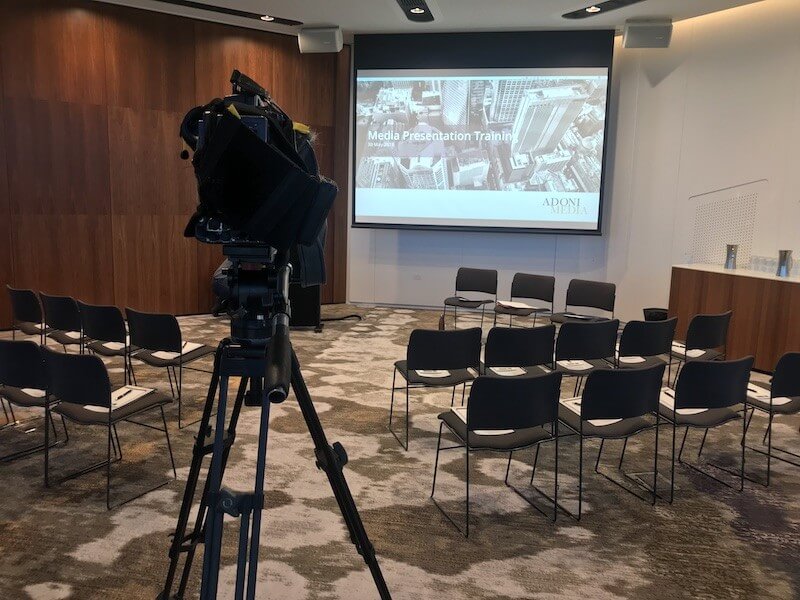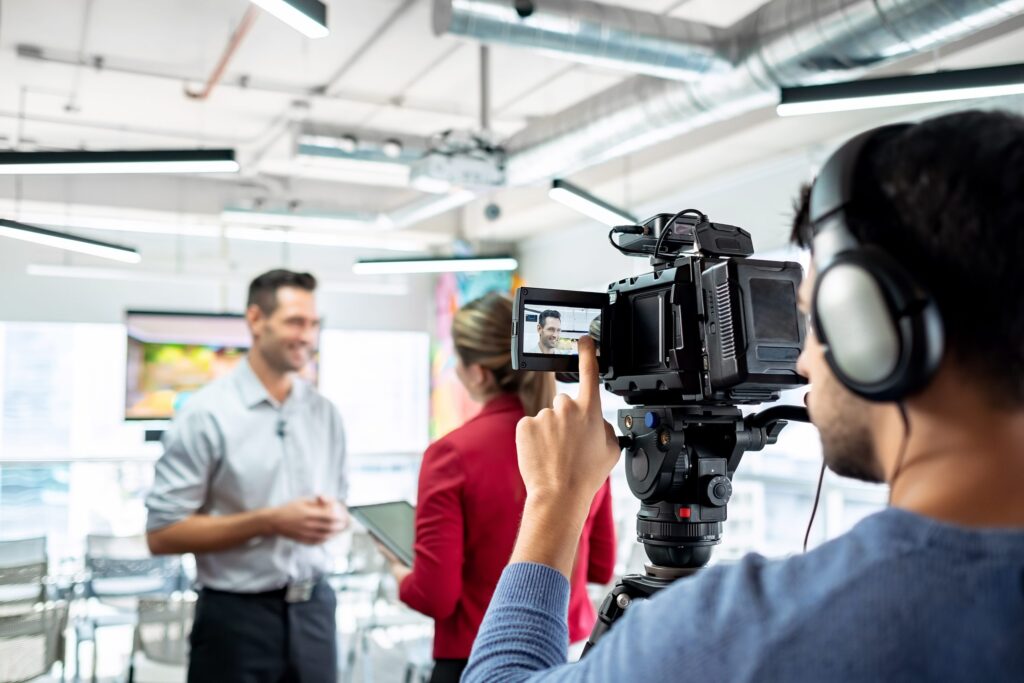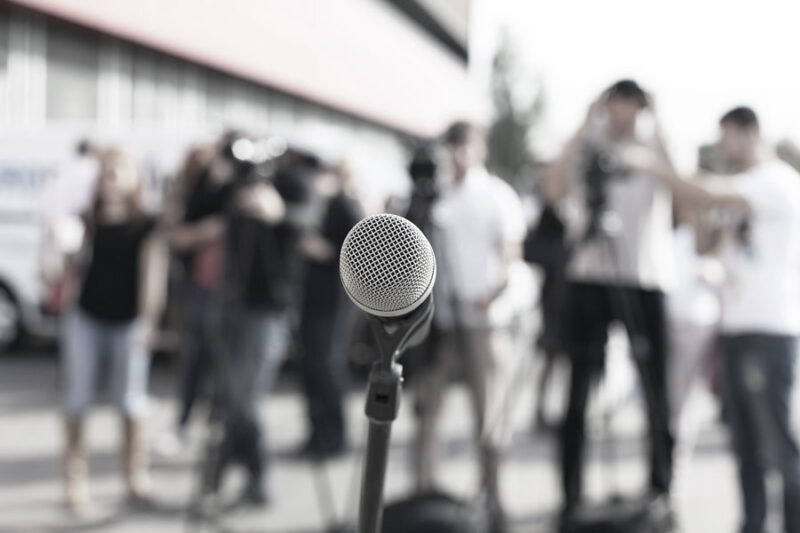If you don’t think media training is important, think again.
Page Contents
A Case for Media Training
One Sunday evening in April 2017, a major American airline company called security on a passenger. The airline overbooked the flight, and the passenger (an elderly doctor) refused to leave his seat. Subsequently, the security personnel dragged the resisting passenger out of his chair, over the aisle, and off the plane.
Videos of the incident went viral. From the comments and posts shared, netizens clearly thought the airline was at fault for overbooking the flight, mishandling the situation, and manhandling a passenger who, in the public’s eye, had the right to refuse egress.
In response to the public clamor, the airline company’s chief executive officer (CEO) issued a statement the following day. In it, the CEO said it was an upsetting event for them at the company, and he was sorry the airline had to “re-accommodate these customers.” He then promised that their team was urgently working with the authorities to review what happened.

That statement was like sticking a bloody carcass out to hungry sharks. To the public, it emphasized how the airline was upset about what happened instead of focusing on how upset the passengers they forcibly ejected (and the rest of the passengers on that flight) must have felt.
What stood out even more was the term “re-accommodate.” It seemed so incongruous a word to use to describe someone being forcefully expelled from an airplane. Several tweets suggested just that; one said re-accommodate now means dragging someone violently out of his seat, while others used re-accommodate as a euphemism for a fistfight and other types of physical altercation.
Overall, the ill-considered statement came across as a tad insensitive. It left the impression that the airline:
1. cared more about what its people were feeling instead of caring more about how the passengers felt, and
2. seemed to make light of the ejected passenger’s plight.
In short, it was a clear messaging miss and this is not a blunder you want to commit when speaking to the media on behalf of your company. Such missteps have costly consequences, such as boycotts, government investigations, and a significant brand equity hit.
Therefore, if your job description involves getting interviewed by the media, especially during times of crisis (i.e., when something dire happens that affects your company), you need media training.
What Is Media Training?

Media training is a specialized communications enhancement program targeted explicitly at key members of an organization, whether private enterprises or government agencies. It is most useful for company and government spokespersons, company executives (especially c-level executives), and other important members of a private or government organization that members of the media may interview.
Media training will teach and train you to talk to the media during press conferences so you can announce good news, company expansions, significant hiring decisions, and product launches. It will also help you become more confident in handling hostile interviews in response to a crisis that involves your organization.
Media training has many components, but broadly speaking, it entails development in the following areas.
1. Message Construction
You may have a lot to say, but you probably won’t have the time or be allowed to say it all. What you need to do is distill your most important message. This will ensure your message is clear and give you an anchor when you talk.
More importantly, your message must be heard loudly, clearly, and as intended. Media training helps you craft powerful soundbites that journalists would love to use as is because of their brevity and impact.
2. Controlling the Interview
Media training will let you practice participating in different types of interviews. It will train you how to handle the media when imparting good and bad news, talking about product launches, and responding to ambush interviews, particularly those in the wake of a crisis.
With practice and coaching, you will become adept at ensuring you stay on message instead of getting derailed by the stress and pressure of the moment.
3. Delivering Your Message
This is the non-verbal component of your message. Your delivery is just as important as your message.
Ideally, you want to be confident when talking to the media. Media training will help you use your body language and vocal dynamics (pitch, rate, rhythm, etc.) to ensure your delivery will be natural, confident, and (seemingly and refreshingly) spontaneous.
4. Crisis Response
If your company were involved in an incident like the one recounted earlier, rest assured members of the press would beat down a path to your door to ask you hard and difficult questions. Media training will prepare you for such moments.
Your coaching team will enact possible critical scenarios your company might face and make you go through simulated interviews to test and hone your crisis communication skills.
3 Media Training Best Practices

When training to handle media communications, remember the following best practices.
1. Clarify and distill your message and deliver it impactfully.
Before doing any interview, be clear on what you want to say. This will give you a clear talking point, focus you, and ensure you won’t go off-point.
You must also learn to deliver your message in an impactful way.
First, you must be able to construct a soundbite that members of the press would use as is. This will ensure you won’t be quoted out of context. You need some speech-writing chops to pull this off, so it would be great if your media training team could teach you how to construct impactful messages.
Second, you must talk with your body and your voice. Let your gestures and vocal dynamics emphasize your message, but be careful. You don’t want to sound practiced and contrived, but rather, you want to sound confident and spontaneous. This requires practice and training to pull off.
2. Be Brief and Stay on Message.
You know what you want to say, so say it. Do not elaborate more than you have prepared, and make sure whatever you say is consistent with the message you want to convey in the first place.
3. Train with media insiders.
Find a media training course that will equip you to work with journalists, presenters, directors, and producers. They would know what they want from an interview because that’s their job, so they’re the best people to train you on what to say and how to talk to the media. Such a team will ensure you’re providing interviews that members of the media would love.
Do You Need Media Training?

If you talk to the media (or are expected to do so) on your organization’s behalf, you need media training.
Media training is different from a general communications or public speaking course because of its particular purpose. It will teach and train you to talk to, handle, and deal with journalists and other members of the media to ensure you can leave them with the best impression of your organization.
For best results, train with media insiders.
Author Bio

Hisham Wyne is an award-winning copywriter, brand consultant and content creator based in Dubai. He has over a decade’s experience in helping brands get their messages right. From crisp web copy and zippy brochures to in-depth company profiles and analytical annual reports, Hisham makes words work for you – so you can sell better, gain visibility, and give your brand a unique voice.
During his time in the Middle East, Hisham has collaborated extensively with blue-chip companies including Twitter, Microsoft, LinkedIn, Harley-Davidson and Aston Martin, and helped government concerns such as the Dubai Internet City, in5 and the Dubai Design District.






